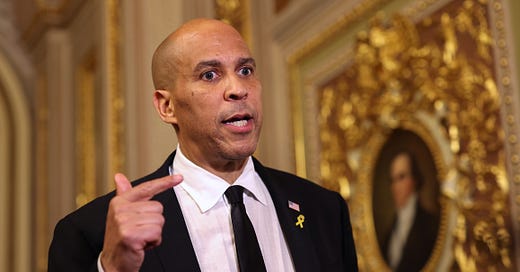
A long time ago in a Washington far, far away, congressional Republicans were against earmarks.
The earmark ban was a way to own the libs while Republicans controlled Congress, which they did for the better part of a decade between 2011 and 2019. But, it also kneecapped their members’ ability to bring home the pork, which is something that up to that point Republicans were quite good at.
But now it’s 2022 and we’re pretty much all Keynesians now. So Republicans are hip to bringing back the logrolling and horse trading. Earmarks are back, baby! After all, you can’t worship at the altar of the King of Debt and seriously pretend to care about the deficit.
And yet, even though this is yet another example of Republican hypocrisy, I’m here to tell you an unpopular truth: Earmarks are good, actually.
An earmark, for those who unfamiliar with legislative sausage-making, is a provision in a bill (or a conference report) that determines an amount of discretionary spending, budget or credit authority, a loan (or guarantee of one), or awards a contract for some project.
Back in the day, Republicans convinced the public that earmarked pork was the real reason government spending was out of control. But that was never the truth. Yes, all totaled, earmarks amount to some real money. But not all earmarked spending was wasteful. The difference between “a pork-barrel project” and “congressionally directed spending” by a representative who understands the needs of his or her community isn’t just in the eye of the beholder.
Were some earmarks wasteful? Sure. But then, have a look at government spending since earmarks went away:
Consolidated Appropriations Act of 2012, $1.019 trillion
Consolidated Appropriations Act of 2014, $1.1 trillion
Consolidated and Further Continuing Appropriations Act of 2015, $1.014 trillion
Consolidated Appropriations Act of 2016, $1.15 trillion
Consolidated Appropriations Act of 2017, $1.17 trillion
2018 Consolidated Omnibus, $1.3 trillion
2019 Consolidated Omnibus, $333 billion
Coronavirus Aid, Relief, and Economic Security Act of 2020, $2.3 trillion
Consolidated Appropriations Act of 2021: $2.3 trillion
Now that’s where the real money is.
But even when earmarks were wasteful in a dollars-and-cents accounting, they did buy us something: a better functioning legislative branch. The lack of earmarks is part of the reason Congress has been so lousy in recent years.
Not having earmarks takes skin out of the game. Politicians keep their jobs because of what they do for their voters. Especially in places that don’t have much, like Alaska, Missouri, or Alabama.
In recent years, even the continuing resolutions and omnibus spending packages, which replaced “regular order,” grew contentious. Written largely by leadership and committee chairs, lower-ranking members were given must-pass bills on a take-it-or-leave-it basis. That may work for some members, like Thomas Massie, Matt Gaetz, or Marjorie Taylor Greene. But members who don’t represent either safe or kooky districts got a raw deal.
Because taking earmarks out of the equation makes these legislative fights binary. In the old days, a member could be against a spending bill in theory, but for it in practice—if it contained earmarks to help his voters.
Somewhere along the way “earmarks” became code for “corruption.” But that’s not really right. Sure, some earmarked projects were corrupt—but corruption was with us even when earmarks were banished.
The better way to think of earmarks is as the kind of local, representative input that makes governing a large polity possible—as the grease in the gears of democracy.
Sure, grease can be dirty. But the machine doesn’t run so well without it.











